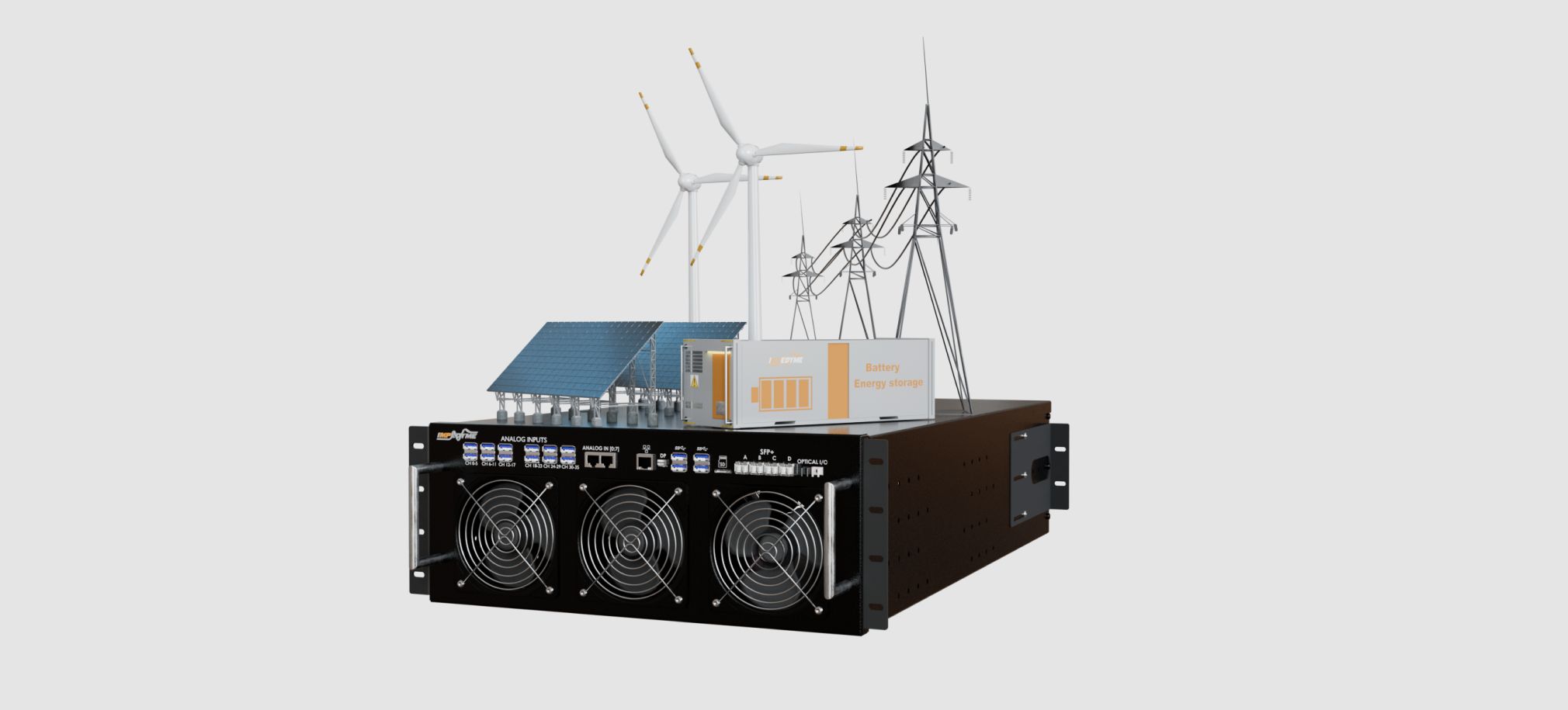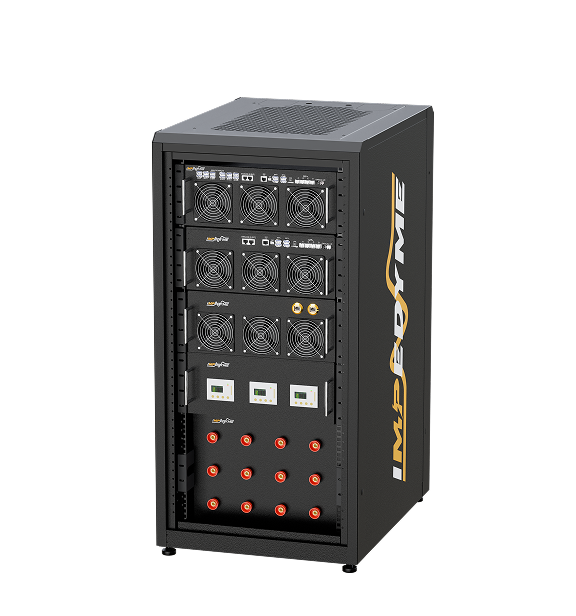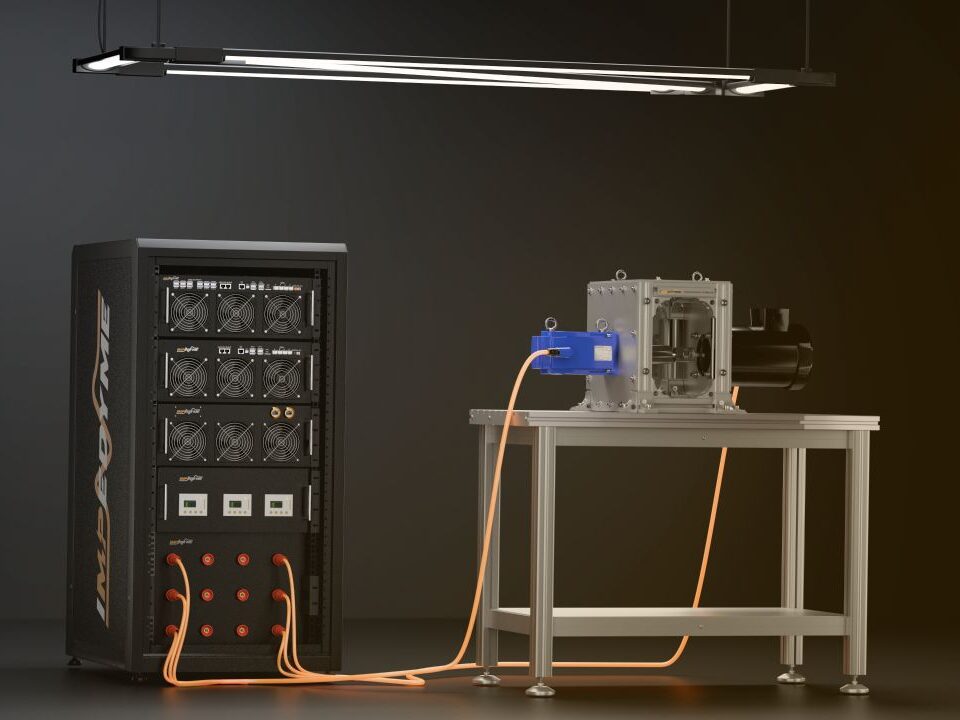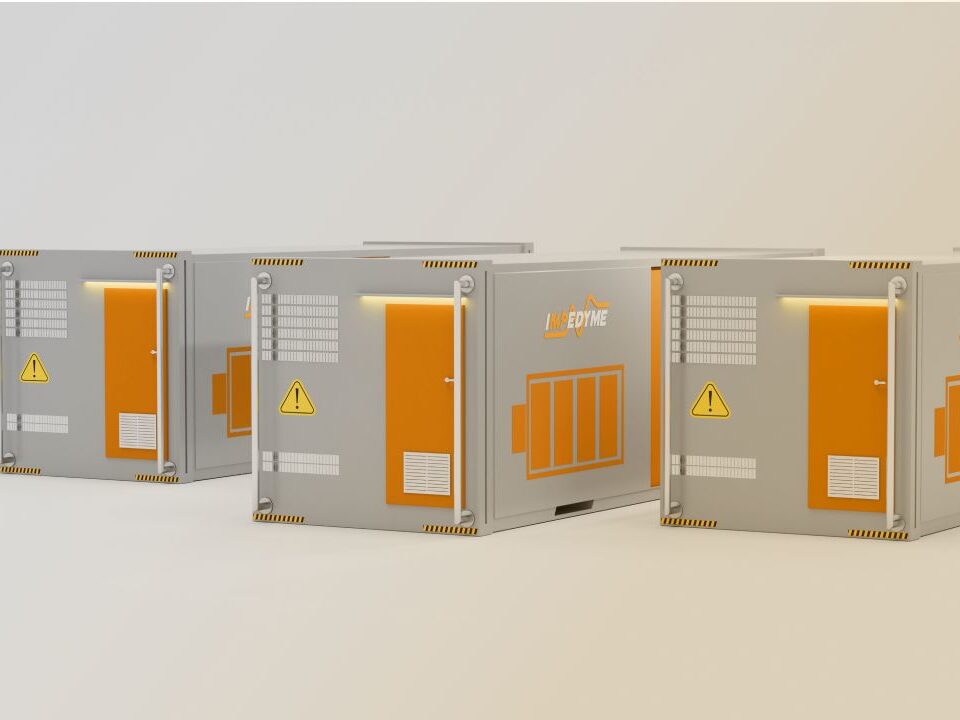
-
 Induction Motor
Induction Motor
-
 Automotive Electrical System Simulation
Automotive Electrical System Simulation
-
 DC/DC Bidirectional Converter
DC/DC Bidirectional Converter
-
 PWM Control for Brushless DC
PWM Control for Brushless DC
-
 BLDC Motor Control and Drive Simulation
BLDC Motor Control and Drive Simulation
-
 Electric Vehicle Fast Charger Simulation
Electric Vehicle Fast Charger Simulation
-
 DFIG Wind Turbine Simulation
DFIG Wind Turbine Simulation
-
 Dual Active Bridge
Dual Active Bridge
-
 EV Dynamometer Test Environment Simulation
EV Dynamometer Test Environment Simulation
-
 Electric Vehicle Simulation
Electric Vehicle Simulation
-
 Three-Phase Grid-Connected Inverter Using Direct-Q…
Three-Phase Grid-Connected Inverter Using Direct-Q…
-
 Three-Phase Grid-Connected Solar Photovoltaic
Three-Phase Grid-Connected Solar Photovoltaic
-
 Grid-Connected Rectifier
Grid-Connected Rectifier
-
 Grid-Tied Inverter System
Grid-Tied Inverter System
-
 Torque Control in a Hybrid Excitation Synchronous …
Torque Control in a Hybrid Excitation Synchronous …
-
 Wye-Delta Starting Circuit
Wye-Delta Starting Circuit
-
 IPMSM-Based Axle-Drive
IPMSM-Based Axle-Drive
-
 Simplified Parallel Hybrid Electric Vehicle
Simplified Parallel Hybrid Electric Vehicle
-
 Simplified Series Hybrid Electric Vehicle
Simplified Series Hybrid Electric Vehicle
-
 Series-Parallel Hybrid Electric Vehicle
Series-Parallel Hybrid Electric Vehicle
-
 Three-Phase Matrix Converter Simulation
Three-Phase Matrix Converter Simulation
-
 Venturini Modulation for Three-Phase Matrix Conver…
Venturini Modulation for Three-Phase Matrix Conver…
-
 Microgrid Frequency Regulation Using Vehicle-to-Gr…
Microgrid Frequency Regulation Using Vehicle-to-Gr…
-
 Three-Phase Modular Multilevel Converter
Three-Phase Modular Multilevel Converter
-
 Field-Oriented Control
Field-Oriented Control
-
 Interior Permanent Magnet Synchronous Generator
Interior Permanent Magnet Synchronous Generator
-
 Permanent Magnet Synchronous Machine
Permanent Magnet Synchronous Machine
-
 PMSM Rotor Angular Velocity
PMSM Rotor Angular Velocity
-
 PMSM-Based Electrical Traction Drive
PMSM-Based Electrical Traction Drive
-
 Maximum Power Point Tracking
Maximum Power Point Tracking
-
 Six-Phase Permanent Magnet Synchronous Machine
Six-Phase Permanent Magnet Synchronous Machine
-
 Synchronous Machine-Based Electrical Drive Simulat…
Synchronous Machine-Based Electrical Drive Simulat…
-
 Single-Stage Solar Inverter
Single-Stage Solar Inverter
-
 Three-Phase Cycloconverter Simulation
Three-Phase Cycloconverter Simulation
-
 Totem-Pole PFC Simulation
Totem-Pole PFC Simulation
-
 Twelve-Pulse Thyristor Rectifier
Twelve-Pulse Thyristor Rectifier
-
 Two-Wheeler On-Board Charger
Two-Wheeler On-Board Charger
-
 Vienna Rectifier Simulation
Vienna Rectifier Simulation
-
 High-Voltage Direct Current
High-Voltage Direct Current
-
 Wireless Power Transfer
Wireless Power Transfer

Comprehensive Documentation for Closed-Loop Control of a Vienna Rectifier Simulation
Table of Contents
- 1 Comprehensive Documentation for Closed-Loop Control of a Vienna Rectifier Simulation
- 1.1 Introduction
- 1.2 System Overview
- 1.2.1 What is a Vienna Rectifier?
- 1.2.2 Purpose of the Simulation
- 1.3 Key Features
- 1.3.1 High Power Factor and Low THD
- 1.3.2 Three-Level Voltage Control
- 1.3.3 Fast Dynamic Response
- 1.4 Simulation Objectives
- 1.5 Technical Description
- 1.5.1 System Configuration
- 1.5.2 Control Methodology
- 1.6 Advantages of Closed-Loop Vienna Rectifier Control
- 1.7 Applications
- 1.8 Simulation Benefits
- 1.9 Summary
- 1.10 Future Enhancements
- 1.11
- 1.11.1 Induction Motor
- 1.11.2 Automotive Electrical System Simulation
- 1.11.3 DC/DC Bidirectional Converter
- 1.11.4 PWM Control for Brushless DC
Introduction
The Closed-Loop Control of a Vienna Rectifier Simulation is a detailed model designed to demonstrate an advanced three-level AC-DC conversion technique. Vienna rectifiers are widely used in high-power applications due to their high efficiency, low harmonic distortion, and near-unity power factor capability. Implementing a closed-loop control strategy ensures stable operation, improved dynamic response, and compliance with power quality standards. This simulation is critical for power electronics applications where precise voltage and current control is required.

System Overview
What is a Vienna Rectifier?
A Vienna Rectifier is a three-phase three-level PWM rectifier topology that offers:
- Reduced switching and conduction losses compared to conventional rectifiers.
- High power factor correction (PFC) with minimal THD.
- Three-level voltage operation, reducing stress on power devices.
Purpose of the Simulation
The simulation aims to:
- Demonstrate the working principles of a closed-loop-controlled Vienna rectifier.
- Validate power factor correction and DC voltage regulation.
- Analyze efficiency, dynamic response, and control stability.
Key Features
High Power Factor and Low THD
The closed-loop control algorithm ensures a near-unity power factor while minimizing input current harmonics. ➡️ HIL/PHIL Benefit: Real-time testing validates power factor correction and harmonic reduction under dynamic grid conditions.
Three-Level Voltage Control
The Vienna rectifier topology allows three-level voltage operation, reducing voltage stress on power devices. ➡️ HIL/PHIL Benefit: Hardware testing ensures proper voltage balancing and improved efficiency under real load conditions.
Fast Dynamic Response
Closed-loop control improves transient response to grid disturbances and load variations. ➡️ HIL/PHIL Benefit: Simulation-to-hardware testing enables fine-tuning of control parameters for optimal real-world performance.
Simulation Objectives
This simulation helps evaluate:
- Performance of different control strategies (PI, predictive, model-based).
- Power factor correction and harmonic mitigation effectiveness.
- Voltage regulation and dynamic response under load changes.
- Efficiency analysis under varying operating conditions. ➡️ HIL/PHIL Benefit: These evaluations transition smoothly from simulation to real hardware testing, ensuring practical implementation feasibility.
Technical Description
System Configuration
- Input: Three-phase AC grid supply.
- Output: Regulated DC voltage for downstream loads or converters.
- Power Stage: Three-level rectifier with IGBT or SiC-based switches.
Control Methodology
- Current Control: Ensures sinusoidal input current and power factor correction.
- Voltage Control: Maintains stable DC-link voltage under varying loads.
- Modulation Strategy: Space Vector Modulation (SVM) or PWM for optimal switching. ➡️ HIL/PHIL Benefit: The control logic can be tested and optimized using Impedyme’s HIL platform before deployment to hardware.
Advantages of Closed-Loop Vienna Rectifier Control
- Higher Efficiency: Reduced switching losses compared to conventional rectifiers.
- Improved Power Quality: Low THD and near-unity power factor.
- Stable Operation: Closed-loop control enhances transient and steady-state performance. ➡️ HIL/PHIL Benefit: These features can be validated across the full development cycle (RCP → HIL → PHIL) using Impedyme’s platforms.
- Bidirectional Power Flow: Enables regenerative braking and energy feedback to the
- Fast Dynamic Response: Ensures stable operation under varying load and input
Applications
- Industrial Power Supplies: High-power rectifiers for motor drives and automation systems.
- EV Charging Infrastructure: High-efficiency rectifiers for fast DC charging stations.
- Renewable Energy Systems: AC-DC converters for grid-connected wind and solar systems. ➡️ HIL/PHIL Benefit: Real-time emulation and testing accelerate the development of tailored solutions for each application.
- Industrial Motor Drives: In variable frequency drives (VFDs), Vienna rectifiers are used to convert AC power to DC and then back to AC for controlling the speed of induction motors. Closed-loop control ensures precise regulation of motor speed and torque, improving energy efficiency and reducing mechanical stress.
- Uninterruptible Power Supplies (UPS): Vienna rectifiers are used in UPS systems to provide clean and stable DC power from the AC mains, which is then inverted back to AC during power outages. Closed-loop control ensures high power quality, low total harmonic distortion (THD), and fast dynamic response to load changes.
- Active Power Filters (APF): Vienna rectifiers are used in APFs to mitigate harmonic distortion and improve power quality in industrial power systems. Closed-loop control enables real-time compensation of harmonics and reactive power, ensuring compliance with power quality standards like IEEE 519.
- Battery Energy Storage Systems (BESS): Vienna rectifiers are used in BESS to interface between the grid and battery banks, enabling bidirectional power flow for charging and discharging. Closed-loop control ensures efficient energy management and grid stability.
- Data Centers: Vienna rectifiers are used in power distribution units (PDUs) to provide high-efficiency AC-to-DC conversion for servers and other critical equipment. Closed-loop control ensures reliable power delivery with high power factor and low harmonic distortion.
Simulation Benefits
With this simulation, users can:
- Analyze closed-loop control strategies in detail.
- Optimize control algorithms for improved performance.
- Test efficiency and power quality metrics under dynamic conditions. ➡️ HIL/PHIL Benefit: These insights translate directly to hardware using Impedyme’s PHIL, ensuring real device compliance with design specifications.
Summary
The Closed-Loop Control of a Vienna Rectifier Simulation demonstrates a high-performance AC-DC conversion approach with advanced control strategies. By integrating Impedyme’s HIL and PHIL solutions, the entire development workflow is streamlined:
| Development Stage | Impedyme’s Contribution |
|---|---|
| Control Design | RCP using HIL for rapid algorithm validation |
| Control Hardware Testing | CIL with real-time Vienna rectifier models |
| Power Stage Verification | PHIL with real voltage and power interaction |
| Final Validation | Full-system PHIL under realistic grid and load conditions |
Future Enhancements
- Implementation of predictive and model-based control techniques.
- Compliance testing with evolving power quality standards.
- Fault-tolerant operation and fault detection strategies.
- Integration with renewable energy storage and smart grid applications.
The combination of a Closed-Loop Control of a Vienna Rectifier Simulation with Impedyme’s HIL/PHIL platforms ensures a seamless development workflow—from concept validation to real-world implementation. This approach enables faster deployment, reduced design risks, and improved reliability for next-generation power conversion systems.






